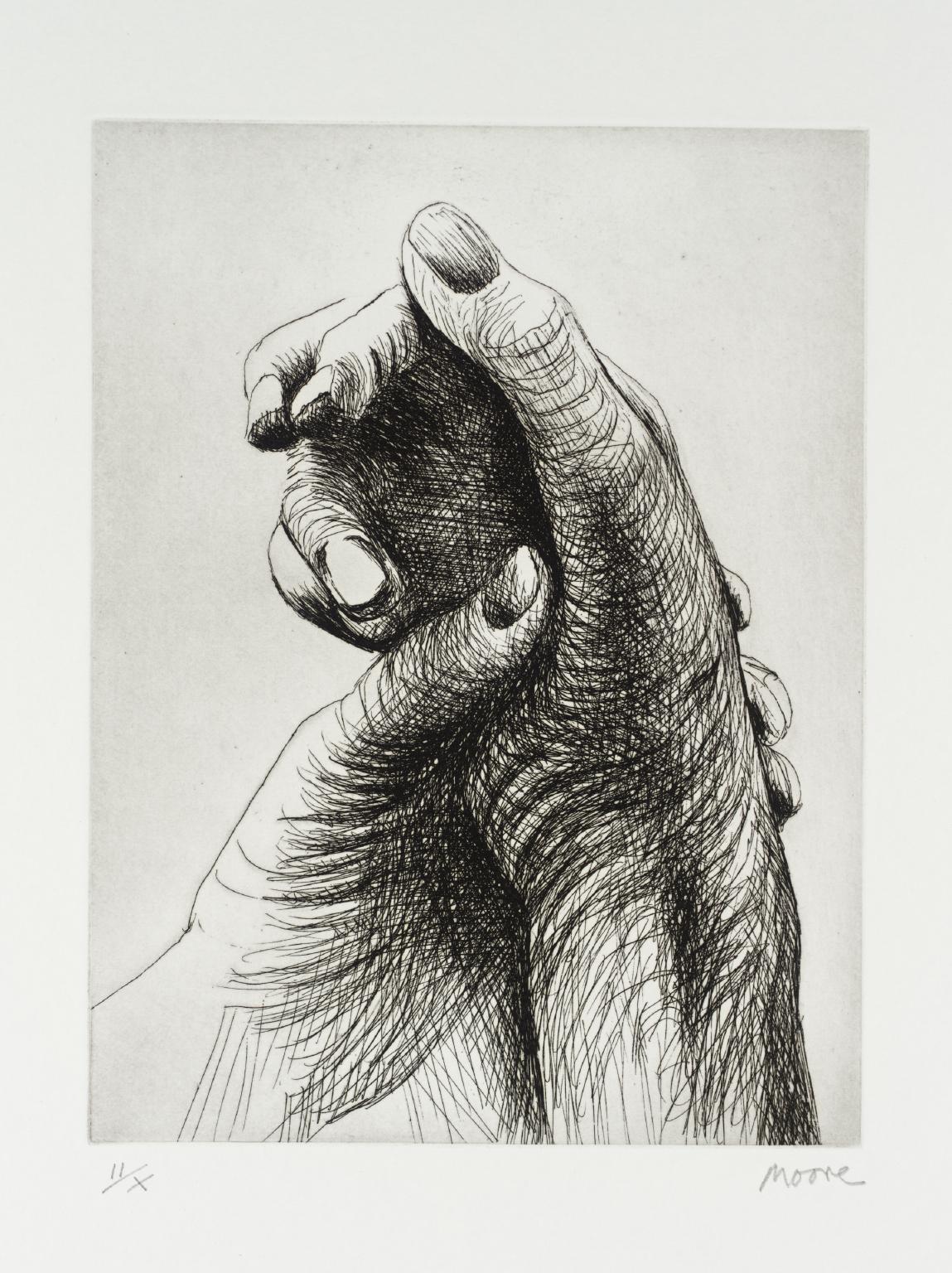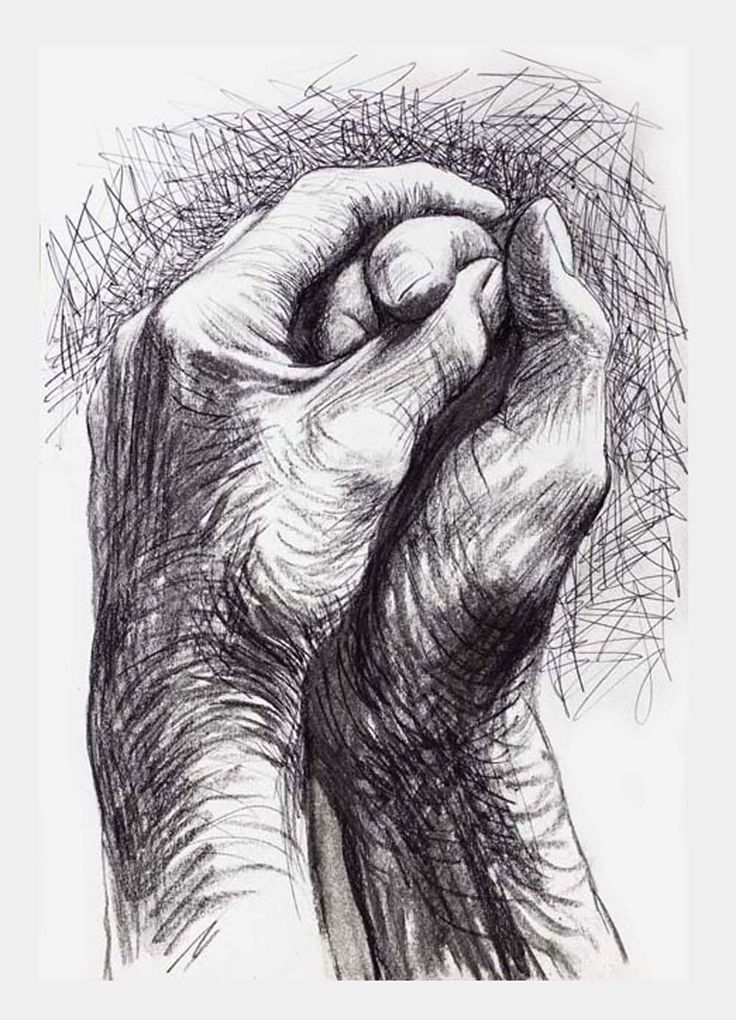After the face, hands and feet are the most expressive parts of the body. It may be tempting to shy away from drawing hands and feet as they present a technical challenge, but when their gesture is successfully captured, they are what gives a drawing its emotional power.
There is an infinite number of shapes a hand can make. Henry Moore made many drawings of his own hands in different configurations. He was interested in the hand’s ability to convey the emotions and the age of their owner, emphasised by directional shading. By letting go of the preconceived image of a hand, he was able to view them as simplified abstract shapes, leading to a more accurate drawing. It is rather ‘handy’ that we are able to draw our own hands and feet, offering a chance to become more acquainted with the forms before being faced with a life model in timed poses.
Whilst studying the hands and feet in isolation has many benefits, it is important to see them in integration with the rest of the figure, not glued on at the end! This helps keep proportions in check, demonstrated superbly by Euan Uglow. In many of his paintings the hands and feet are coming out towards the viewer, and scale is adjusted according to perspective, meaning that in this example one foot appears much larger and lower down in the picture than the other. Uglow uses the placement of feet firmly on the ground to situate the figure in space and give it weight.
Euan Uglow, The Quarry Pignano, 1979.
Egon Shiele takes a much looser approach to drawing hands and feet, exaggerating the gestures of his models through a strong line. The hands and feet of his nudes are not conventionally elegant but bony and spatulate. He depicts every articulation for maximum expression, embracing distortion literally from ‘head to toe’. It goes to show that drawings of hands and feet need not have perfect anatomical accuracy - but simply be executed with confidence!
Egon Schiele, Mime van Osen with crossed arms, 1910.




